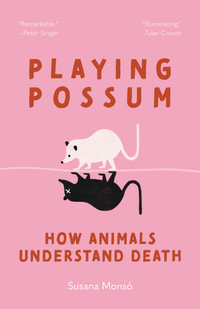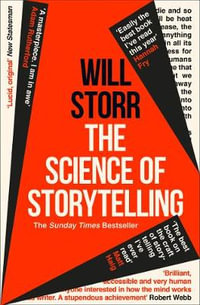| Acknowledgments | |
| Self-Consciousness and the Body: An Interdisciplinary Introduction | |
| Self-Consciousness and the Body | |
| Substantive Self-Consciousness | |
| Representing Objects, Other Persons, and Oneself | |
| Self and the Environment | |
| Bodily Awareness | |
| The Senses of 'Proprioception' | |
| Representations of the Body | |
| Phenomenology and Spatial Content | |
| Representation, Phenomenology, and Substantive Self-Consciousness | |
| I-as-Subject, Ownership, and Elusiveness of Self | |
| References | |
| The Body Image and Self-Consciousness | |
| Reference and Conceptual Role | |
| Body Image and Body Schema | |
| The Token-Reflexive Rule | |
| Psychological Structure over Time | |
| The Social Dimension of Causal Role | |
| Acknowledgments | |
| Infants' Understanding of People and Things: From Body Imitation to Folk Psychology | |
| Early Understanding of Physical Objects | |
| Identity | |
| Human Bodies as Objects | |
| The Problem of Imitation | |
| Innate Imitation: Strong Nativism | |
| The Intentional Nature of Imitation | |
| The Interpretive Nature of Imitation | |
| Infants' Conception of Persons | |
| Identity for Human Individuals | |
| Developing Objectivity about Persons | |
| Developing Subjectivity for Persons: Early Folk Psychology | |
| Concepts of the Self and the Other | |
| Acknowledgments | |
| Notes | |
| References | |
| Persons, Animals, and Bodies | |
| Animalism and the Source of the Problem | |
| Another Difficult Case | |
| Some Responses | |
| The Possibility of''Brain Zaps" | |
| Split Brains | |
| A General Argument | |
| A Hybrid Account | |
| Some Difficulties | |
| Conclusion | |
| Acknowledgments | |
| Notes | |
| References | |
| An Ecological Perspective on the Origins of Self | |
| The Ecological Approach to Self | |
| Some Implications of the Ecological Approach to the Origins of Self | |
| Visual Proprioception and Posture | |
| Direct Perception and the Interpersonal Self | |
| Direct Perception and the Core Sense of Self | |
| Note | |
| References | |
| Objectivity, Causality, and Agency | |
| The Pragmatist Argument | |
| Objects as Causes | |
| Bodily Power | |
| The Harmony Requirement | |
| Acknowledgments | |
| Notes | |
| References | |
| At Two with Nature: Agency and the Development of Self-World Dualism | |
| Weakening the Piagetian Thesis | |
| What Agency Gives Us | |
| Object Occlusion and Object Permanence | |
| Self-World Dualism and a Conception of Other Minds | |
| Acknowledgments | |
| Notes | |
| References | |
| Ecological Perception and the Notion of a Nonconceptual Point of View | |
| The Ecological View of Perception | |
| Ecological Perception and the Notion of Point of View | |
| Awareness of Action and Points of View | |
| Conclusion | |
| Acknowledgments | |
| References | |
| Proprioception and the Body Image | |
| Is Proprioception a True Perceiving? | |
| Proprioception and the Attention | |
| Proprioceptive Attending in Physical Instrumental Action | |
| Proprioceptive Attending and the Whole Body | |
| The Short-Term Body Image | |
| The Distinction Between Short-Term and Long-Term Body Image | |
| Three Different Kinds of Short-Term Body Image | |
| The Constitutive Raw Material of Body Images | |
| The Long-Term Body Image | |
| A Conceptual Preamble | |
| The Origin of the Concept of a Long-Term Body Image | |
| Filling in the Concept of the Long-Term Image | |
| The Type and Ontological Status of the Long-Term Body Image | |
| Is the Long-Term Body Image an A Priori Postulate? | |
| Notes | |
| References | |
| Awareness of One's Own Body: An Attentional Theory of Its Nature, Development, and Brain Basis | |
| Impairments of Bodily Awareness | |
| When Does One Attend to the Relative Disposition of One's | |
| How Does One Focus Attention on a Body Part? | |
| Why Are There No Local Autotopagnosias? | |
| Is There a General Autotopagnosia? | |
| Opposing-Processor Imbalance and Impaired Body Awareness | |
| What Explains the Indifference and Denial Syndromes? | |
| To What Does One Attend When One Attends to the Body? | |
| A Body Scheme Acquisition Device? | |
| A Body-Image-Acquisition Device | |
| The Self as Emerging from Background Body Sensation | |
| Body Sensation, Episodic Memory, and the Self | |
| How Are Body Parts Represented? | |
| Conclusions | |
| References | |
| Body Schema and Intentionality | |
| Body Image and Body Schema: A Clarification of Some | |
| Intentionality and the Prenoetic Body: Husserl and Merleau-Ponty | |
| Body Schema and Physiology | |
| Recent Psychological Studies and Implications for Cognitive Science | |
| Acknowledgments | |
| Notes | |
| References | |
| Living without Touch and Peripheral Information about Body Position and Movement: Studies with Deaff... | |
| Touch, Proprioception, and the Peripheral Nervous System | |
| The Physiological Loss in I.W. and G.L. | |
| Case Histories | |
| Strategies for Everyday Movement | |
| Perceptual Frames of Reference | |
| The Body-Schema Problem | |
| The Problem of Morphokinesis versus Topokinesis | |
| Production of Force and Corollary Discharge? | |
| Some Consequences of Deafferentation on One's Approach to the World | |
| Body Language | |
| Views of Self and of Body Image | |
| Unavoidable Limitations | |
| Conclusions | |
| Acknowledgments | |
| References | |
| Bodily Awareness: A Sense of Ownership | |
| A Phenomenological Sense of Ownership | |
| The Sole Object of Awareness | |
| Bodily Awareness and Self-Awareness | |
| Acknowledgments | |
| Notes | |
| Bibliography | |
| Bodily Awareness and the Self | |
| Evans's Antidote to Cartesianism | |
| A Cartesian Response to Evans | |
| The Nature and Spatial Content of Bodily Awareness: A More Direct Objection to Cartesian Dualism | |
| Extending the Argument | |
| A Cartesian Last Stand | |
| Experience of Ownership and the Subject as Object | |
| Acknowledgments | |
| Notes | |
| References | |
| Introspection and Bodily Self-Ascription | |
| Introduction | |
| The Elusiveness Thesis | |
| Proprioception and Appropriation | |
| The Body and the Self | |
| Acknowledgments | |
| Notes | |
| References | |
| Consciousness and the Self | |
| Points of View | |
| The Ecological Self and Consciousness | |
| Perceptual Consciousness and Attention | |
| Implicit Self-Consciousness and Externality | |
| Acknowledgments | |
| References | |
| Contributors | |
| Index | |
| Table of Contents provided by Publisher. All Rights Reserved. |
























